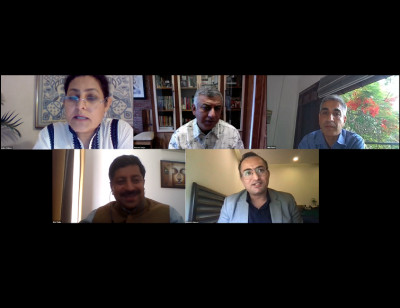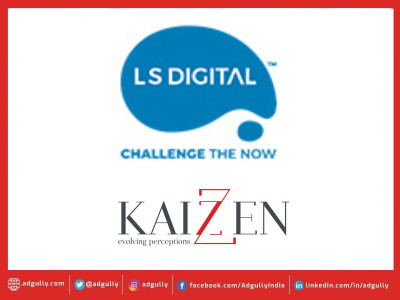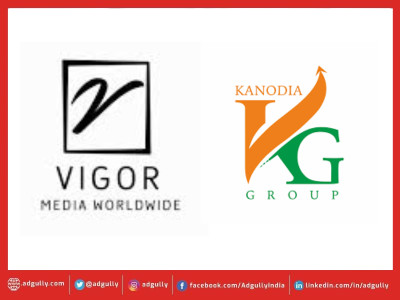Image transformation is not a communications, but a business planning exercise: PR experts
Organisation models have shifted from product driven to customer centric and now to purpose led in its latest iteration. But while product and customer mind-sets were crucial in defining organisational culture in great companies like Apple and Amazon, purpose is only something that emerges in most companies via their marketing communications.
At the christening of our virtual panel, Adgully4um – a series of knowledge webinars conducted via Zoom Video Conferencing, we engaged with experts from the Public Relations industry to discuss the role of ‘Enhanced Social Responsibility’ in the context of the new normal. The discussion was joined by:
Madhu Chhibber, CEO, Madison PR – Moderator
Abhishek Gulyani, Chief Executive Officer, India at H+K Strategies
Ashwani Singla, Founding Managing Partner of Astrum
Nitin Mantri, Group CEO, AvianWE
Nitin Thakur, Director, Brand & Communications, Max Group
The purpose of the discussion was to understand how purpose is taking front and centerstage is most organisations and how values are becoming the lodestone for business decisions.
Prefacing the discussion, Madison PR’s Madhu Chhibber said, “We live in a chaotic world where uncertainty is the only certainty for now. Brands have always existed to meet a need but they also have a wider responsibility to fulfil. While several brands have consciously realised this over the years often times other priorities have taken over. Purpose driven communication is more important now than ever.”
In their opening comments, panellists shared how the idea of being purpose driven is really taking root in marketing exercises and in the broader organisational culture, its leadership and stakeholders.
Astrum’s Ashwani Singla said, “For over a decade, I have championed the cause of leadership with a purpose. Most organisations are good at telling their story – what they do and how they do it. But when you start asking the question why do you do something? Eight out of ten organisations struggle to find the answer. When you find your purpose you will find the meaning in your existence and the conversation about whether there needs to be social impact and do companies need to do something different during a time of crisis for their customers won’t need to be answered. They will do what is right at all times whether it is good, bad or ugly.”
Singla further said, “During the same time last year when we were suffering from death by webinars, the big focus during conversations was that whether the company is going to do something for their employees or something extraordinary for their customers. The idea of establishing leadership both from a reputation as well as from a market leadership standpoint is important for which you need understand ‘why you exist’which informs what you need to do.”
Also read: How the PR Industry fought to stay resilient & relevant
“Some companies like Hindustan Unilever have done this really well – reinforce the same purpose over and over again, align the organisation – its external and internal stakeholders to find that meaning. Then you have clarity of purpose and action.”
AvianWE’s Nitin Mantri remarked, “The pandemic has brought social responsibility to the forefront. Whether it is practicing social distancing, wearing a mask or relief efforts – people are thinking more and more about how their actions will impact others. Depending on how we are vaccinated, it is likely that the post-COVID-19 world will be challenged with fewer jobs, lower salary, and lower morale at the same time the social action that marked 2020 is only likely to intensify. Last year, we had Black Lives Matter in the U.S and Famer’s Protests in India, more and more people are taking up causes in support of initiatives they believe in. Even before the world was turned upside down by the pandemic, the demand for social responsibility was increasing.”
Continuing further, he said, “Our ‘Brands in Motion’ study which WE Communications does globally revealed that the new brand loyalty is driven by more than product or customer service – like a shared understanding of humanity and respect. In fact, 53 per cent of respondents said they wanted brands to address environmental problems and 74 per cent said that they want brands to take up issues that matter to them. Even before the pandemic, consumers wanted brands to care about social, environmental and ethical issues.”
“We also discovered that leadership – how it is defined is in the midst of significant transformation. If you dig deeper into a report we did recently, 89 per cent of leaders believe that purpose is becoming as important as financial results. 89 per cent are engaging with issues that affects their employees as a moral obligation. 86 per cent leaders say they have become more introspective and the list goes on,” Mantri added.
Max Group’s Nitin Thakur pointed out, “The public’s frame of mind currently is most receptive to health, wellness and safety related aspects but this may be transient. Purpose driven communication has been important since the last decade. Focusing on product driven outcomes or presenting the company as a fabulous asset always took precedence in meetings. In the unlisted space, the discussion will revolve around valuation and in the listed space the company would want to project the growth in bottom line or market capitalisation and that ended up holding sway.”
“The current situation is a perfect time to get a buy-in internally that an organisation needs to pivot its focus mainly towards being seen as relevant and purpose driven. You have that frame of mind, so you can get that buy-in, investments, reputation trajectory change and invest in planning around it for the next three years. And I say three years frankly because five and ten year planning is redundant,” Thakur added.
“Some would say that the chief communications officer should be the center of such a shift in the organisation. This shift is a change in perception. I’d like to be a contrarian and say that being a purpose driven is not a tick mark for an organisation. To really undergo an image transformation is a business planning exercise. The CCO should at best be a part of a task force in the organisation formed to be purpose driven. Unless the organisation is evaluating its products/services and how they are aligning with the cause, the supply chain is set itself to be accountable, the short term impact to a business is baked in, or else the transformation is not going to succeed and it is cause-washing at best.”
H+K Startegies’ Abhishek Gulyani commented, “The purpose has to be owned by the CEO of the company who has to basically answer three key questions:
- What is the company’s reason to exist?
- What is the value the company brings to the customer?
- How do we uniquely position ourselves in the market?
Now, the value that you bring to your customers extends to a much broader ecosystem. Therefore, what you uniquely offer to the market as a purpose driven organisation has broadened.”
Gulyani noted, “A lot of people believe that CSR is equal to purpose. It’s not and this is a change in mind-set that PR professionals need to bring. Communications leaders can play a role by having a seat at the table with the board and the CEO and articulate the purpose that resonates with the stakeholder ecosystem.”
“For an agency, our role is to help identify the purpose, ensure it resonates and select the creative platform to define the messaging i.e. begin looking at our content publishing strategy. We have to be careful when crafting a higher purpose. The purpose can’t be over the top or it will become very difficult to execute. There may also be the case that nobody understands what the purpose is. It will take the leadership team, communication partners and agencies to start articulating the purpose externally,” he concluded.
















Share
Facebook
YouTube
Tweet
Twitter
LinkedIn